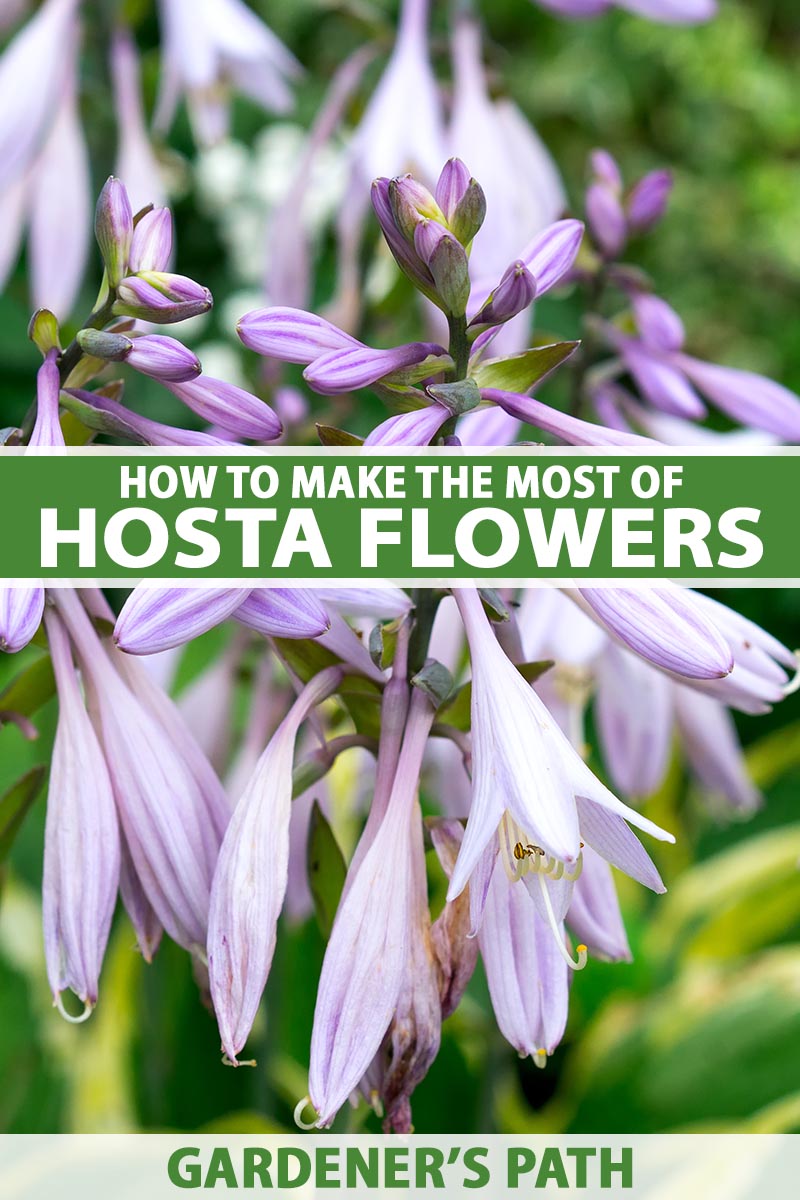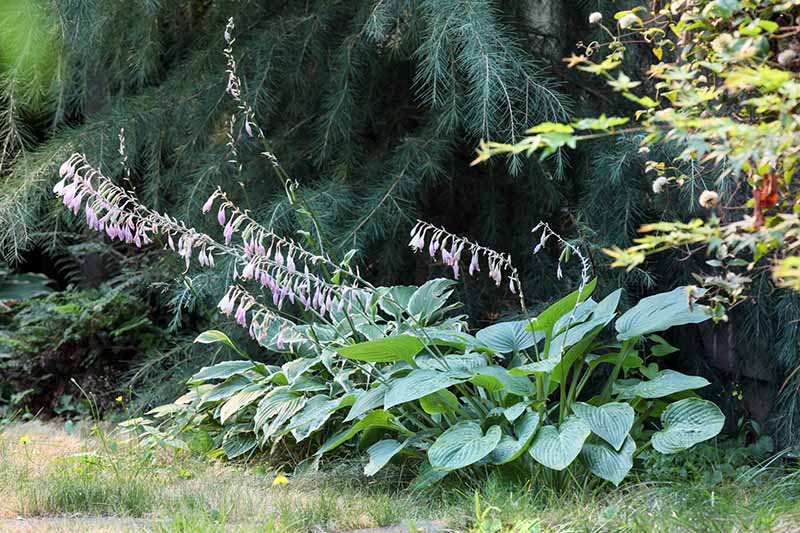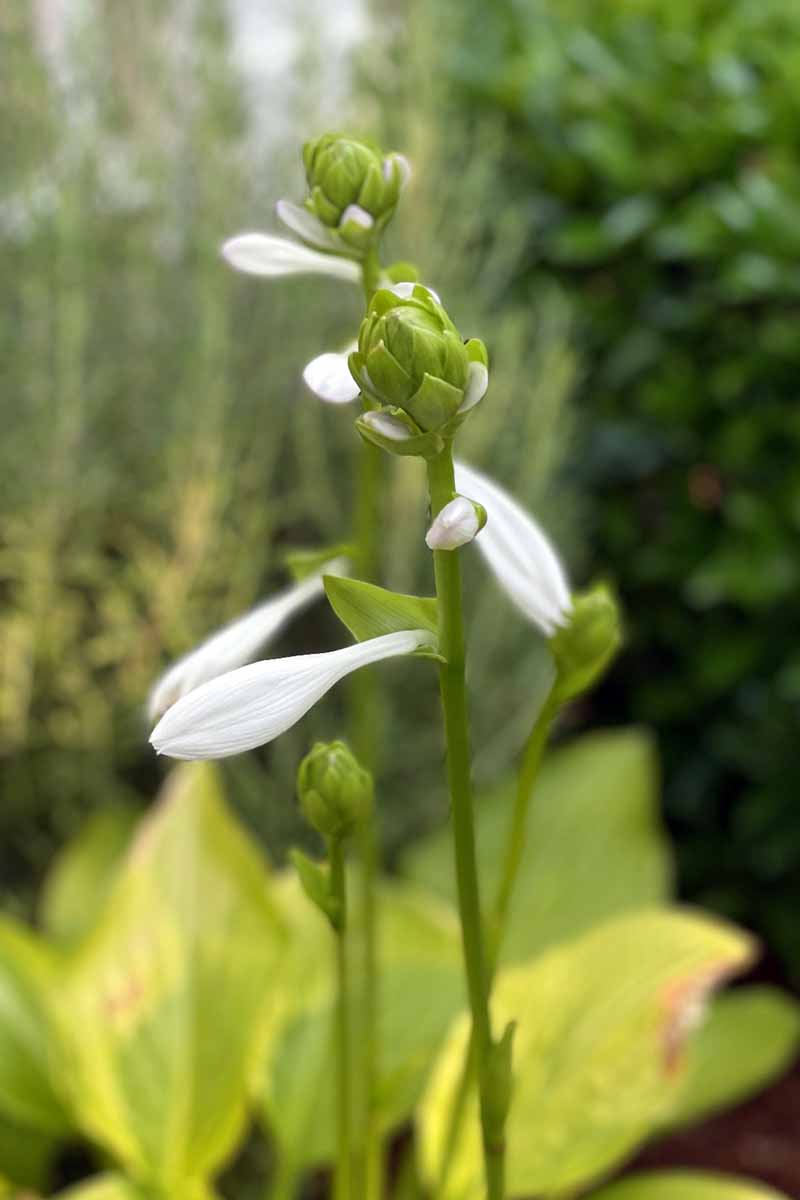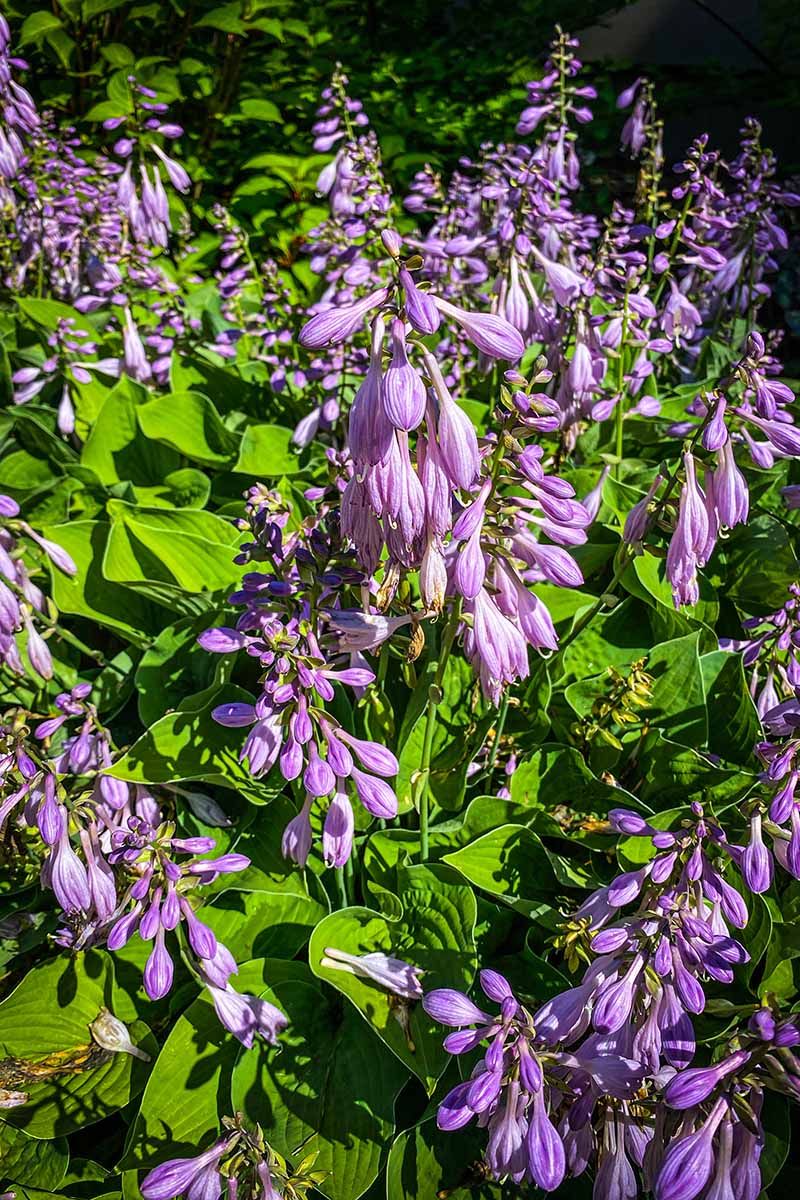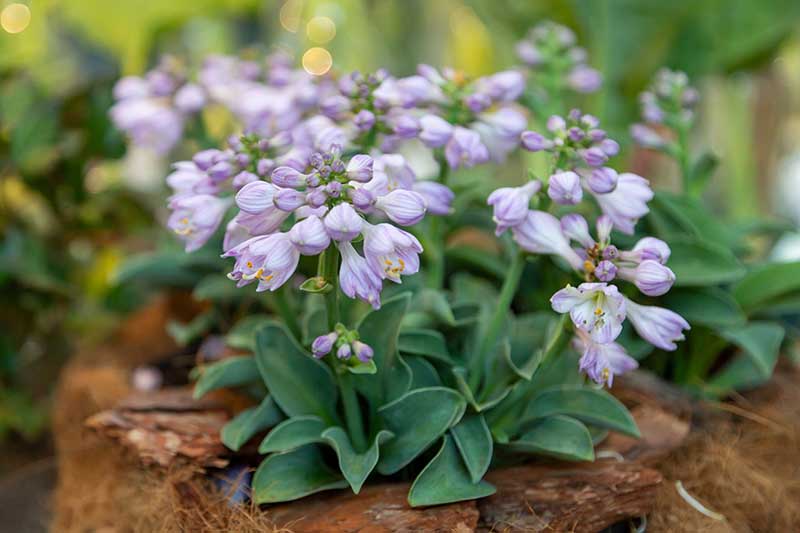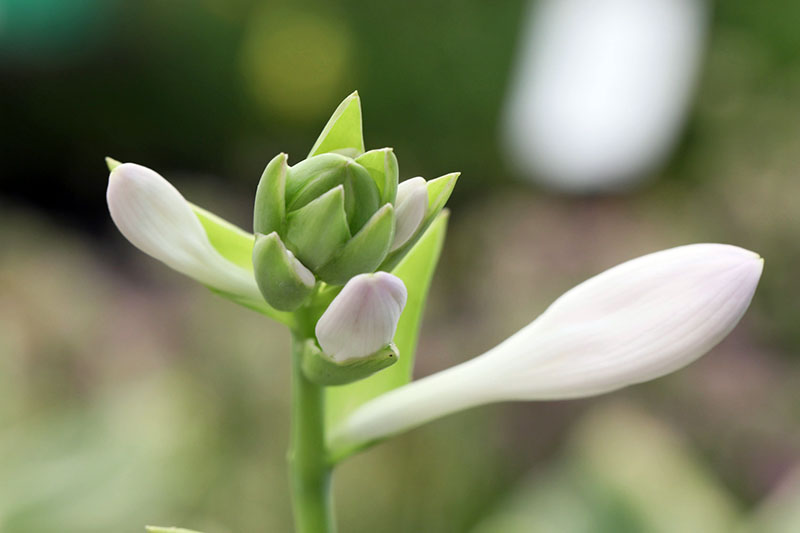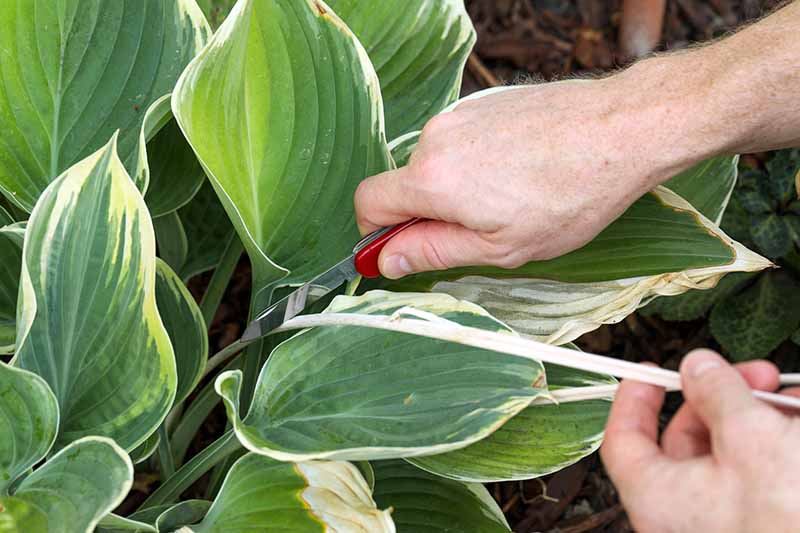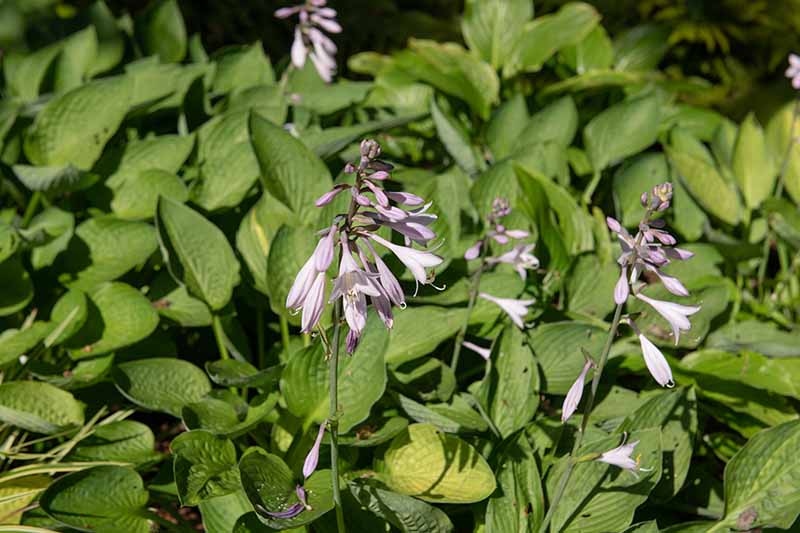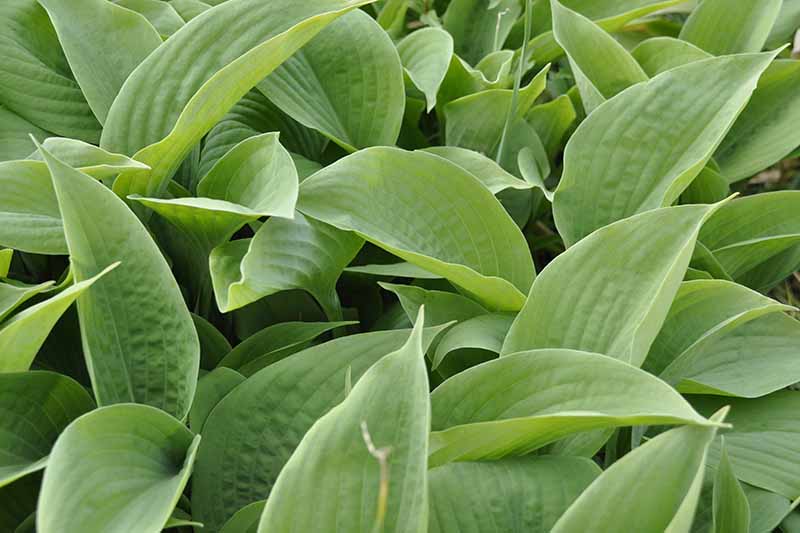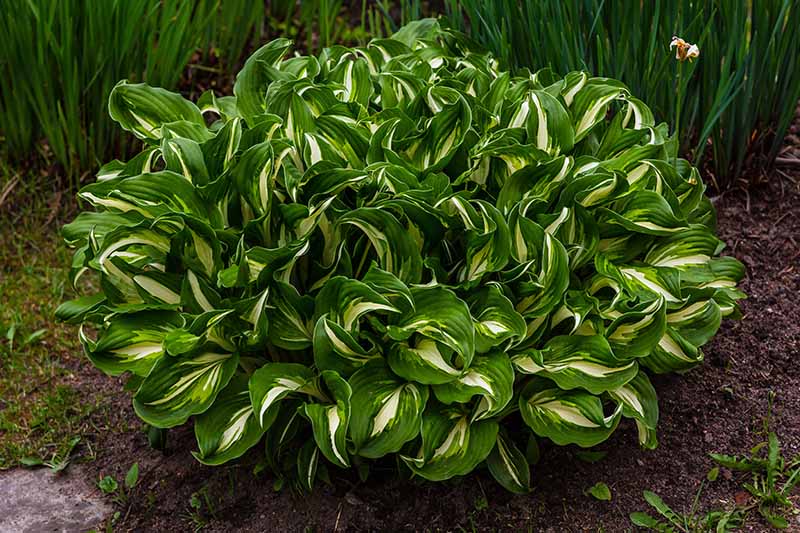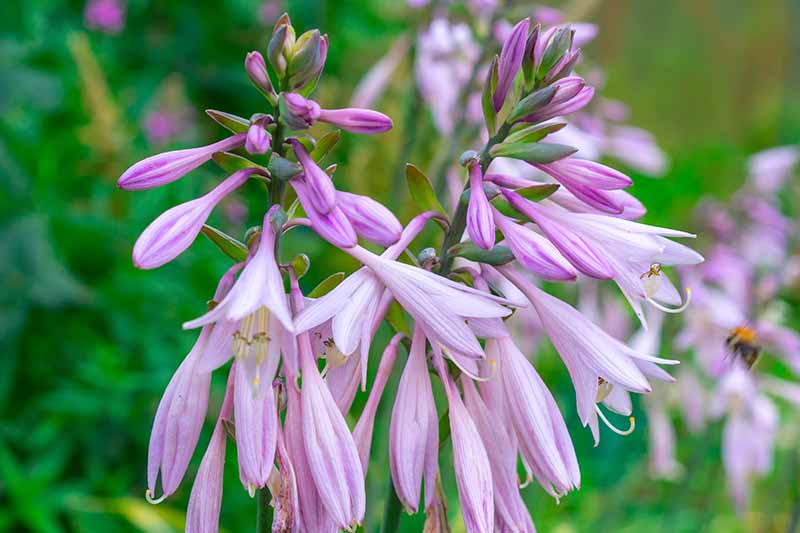These foliage plants are known for their lovely leaves, but many species have big, colorful, highly fragrant flowers. Plus, breeders and enthusiasts are working hard to create hybrids that have even more massive, heavily-scented blossoms in new colors. A lot of people don’t know what to do with the blooms, though. Do you need to cut them to keep the foliage pretty? Should they be deadheaded to encourage more blooming? What if your plant isn’t flowering? We link to vendors to help you find relevant products. If you buy from one of our links, we may earn a commission. Here’s what you can look forward to: Ready to give your hosta blossoms their due? Let’s get busy.
All About Hosta Flowers
Hostas can have blossoms that are white, cream, pink, pale blue, lavender, or purple. There are even a few cultivars that have red or yellow flowers. The blossoms can range from petite and under an inch long to over three inches long. Some have hardly any scent at all, and others are incredibly fragrant. Most are tubular or bell-shaped and look a bit like lilies. Some are even double and full. They grow on stalks called racemes, and these stalks can stay relatively short compared to the rest of the plant, or they can grow to two or even three times the height of the leaves. Some spikes extend over five feet tall, such as those of ‘Empress Wu,’ while others are mere inches tall. The first flowers to open are located at the lower end of the flower cluster. As those fade, new blossoms above those open until the very top flower is blooming.
When Do They Bloom?
There are dozens of species. Each one starts blooming at a slightly different time of year, and stays in bloom for a different length of time. In general, you can expect the stalks to pop up in late spring to late summer, but some bloom in mid-spring, and others last until the first frost hits in the fall. You can broadly categorize these bloom times into early, mid, and late blooming. Early ones tend to come up in June and last until summer is in full swing. Mid-season bloomers flower during the peak of summer. Late bloomers pop up at the end of summer and last until the frost. Most of the highly fragrant types are late bloomers.
Cut or Keep?
Every single hosta species flowers at some point. That’s how they reproduce. However, unlike some plants such as lettuce, which die back once flowering starts, you can let your plants bloom and the leaves will still be as large and colorful as ever. Whether to cut or keep your flower spikes is simply a matter of personal preference. Do you like the look of them? Keep ‘em! Don’t like the look? Cut them down. By the way, if you do cut down the spikes, consider putting any forming buds to use in the kitchen. They look a bit like artichokes and you can fry them up or steam them and dip them in butter. They’re delicious. The blossoms are edible, too. They’re sweet and can be added to salads or sugared for use on desserts. You should, however, always cut spent spikes. Don’t leave them in place unless you want to save the seeds to try and plant a new one. If that’s the case, let the spikes go to seed rather than cutting them off.
How to Deadhead
You don’t need to remove the actively blossoming spikes unless you don’t like the look of them. Removing them usually won’t encourage new spikes to form, and it isn’t necessary to keep the foliage looking its best. But once the stalks start turning brown and dying back, it’s time to remove them before they form seeds. Doing so makes the plants look better and can help prevent disease, since dead parts can harbor moisture and reduce air circulation around plants. It also encourages the plant to redirect its energy back into the foliage rather than making seeds. To remove them, use a pair of secateurs, scissors, or a knife and cut the stalk off at the lowest point you can reach. You can read more about deadheading flowers in our guide.
The Best Varieties for Flowers
Interested in growing these plants for the flowers? Here are a few to consider. Hybrids and cultivars from the H. plantaginea species usually have the largest, most fragrant flowers, though you can find lots of other great options. ‘Purple Sensation’ is a stunner. The blossoms are dark purple, unlike most that are more lavender, and have white borders. ‘Purple and Gold’ has purple flowers on maroon spikes. Both ‘Royal Standard’ and ‘Guacamole’ have massive, extremely fragrant white flowers. ‘Miracle Lemony’ has incredibly vibrant yellow blossoms. ‘Almost’ is an exciting new hybrid with purple flowers on red scapes. ‘Fragrant Bouquet’ starts flowering in the spring and the flowers stick around until the frost, so long as you cut off the spent spikes – otherwise, it will go to seed. The blossoms are light blue and turn white in the sun, and they have a scent similar to gardenias. ‘Fragrant Gold’ is similar to ‘Fragrant Bouquet,’ but with lavender flowers and gold leaves. ‘Summer Fragrance’ lives up to its name, with large, lavender, heavily-scented blossoms. ‘Aphrodite’ has pure white flowers that are full and double, with an intense fragrance. ‘Honeybells’ has fragrant lavender blossoms in the late summer.
Why Aren’t My Hostas Flowering?
First things first: some have insignificant flowers. While all of them bloom, not all of them have large or showy blossoms. Check to see whether yours should be noticeable before you start to worry. You should also find out when your particular plant blooms. Some start sending up spikes in the spring, while others wait until the late summer. There’s no point in panicking if you have one that blooms late in the year. Also, some types take a few years to become settled in before they’ll flower. The most common reason that your plants might fail to bloom is that they are growing in shade that is too deep. I know, they are known for being shade lovers, but they still need some sunlight. Some might survive in deep shade, but they won’t thrive. Those that are growing in depleted soil might not have the nutrients they need to bloom either. If you haven’t fertilized in a few years, it’s time to break out the all-purpose stuff and side-dress your plants. Remember that deer, slugs, and snails all love to chomp on hostas. A deer might take a bite out of the tops of the plants and consume any buds. Gastropods can damage the emerging buds as well. Finally, a plant that is being attacked by pests or disease pathogens might not bloom. Our hosta growing guide can help you to solve any of these problems. With new hybrids popping up constantly, maybe it’s just a matter of time until they are as beloved for their flowers as they are for their leaves. Hopefully, you feel confident in how to handle your hosta blossoms now. If so, come back and share which varieties you’re growing in the comments. Pictures are always welcome! Next, you might want to take a look at some of our other helpful hosta content:
19 Favorite Hosta VarietiesHow to Grow Hostas in ContainersWhen and How to Divide Hosta Plants
